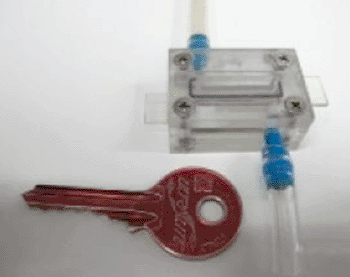Chip Identifies Toxicity as a Biological Quality
By LabMedica International staff writers
Posted on 30 Jul 2012
A biosensor detects toxicity quickly and accurately, generating low false positive and false negative readings.Posted on 30 Jul 2012
Called the Dip Chip, the device contains microbes designed to exhibit a biological reaction to toxic chemicals, emulating the biological responses of humans or animals.

Image: Scientists have combined biology and engineering to produce a biosensor device called the "Dip Chip," which detects toxicity quickly and accurately, generating low false positive and false negative readings (Photo courtesy of Tel Aviv University).
Invented by Prof. Yosi Shacham-Diamand, vice dean of Tel Aviv University's Faculty of Engineering (Ramat Aviv, Israel) together with Prof. Shimshon Belkin of the Institute of Life Sciences at the Hebrew University of Jerusalem (Givat Ram, Jerusalem, Israel), the device contains microbes designed to exhibit a biological reaction to toxic chemicals, emulating the biological responses of humans or animals. The biological reaction is converted into an electronic signal that can be read by the user.
"In my lab, we developed a method for communicating with the microbes, converting this biological response to electrical signals," Prof. Shacham-Diamand explained. The device, which looks like a dipstick, immobilizes these specially produced microbes next to the sensing electrodes. Once the microbes come into contact with a questionable substance they produce a chemical signal that is converted to an electrical current by a device that can interpret the signals, producing a binary toxic or not toxic diagnosis.
The new chips are based on genetically modified microbes developed in Prof. Belkin's lab. When the modified microbes are exposed to toxic or poisonous materials, they produce a measurable biochemical reaction, which is converted into to electrical signals.
The Dip Chip is designed to alert the user to overall toxicity. Because the chip measures general toxicity, it will pick up on any and all toxic materials -- even those that have not been discovered or invented. Beyond their ability to find toxic chemicals in the field, these chips can also be put to use in the cosmetics or pharmaceutical industries, said Prof. Shacham-Diamand.
Related Links:
Tel Aviv University's Faculty of Engineering
Institute of Life Sciences at the Hebrew University of Jerusalem














